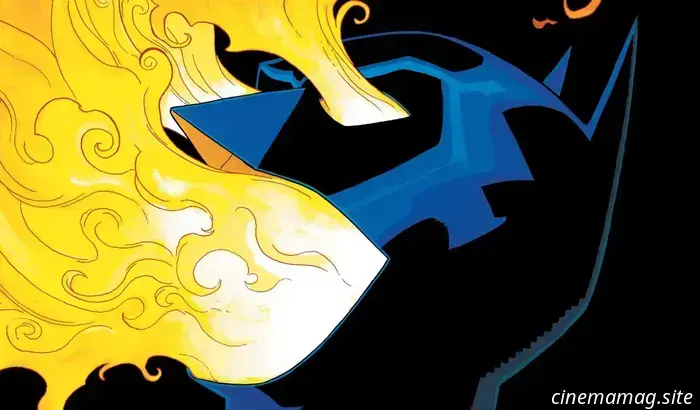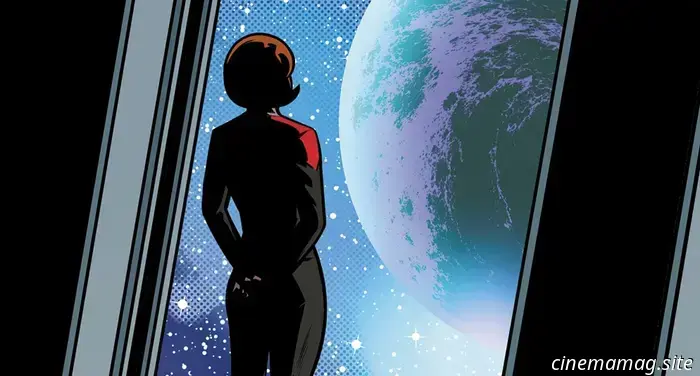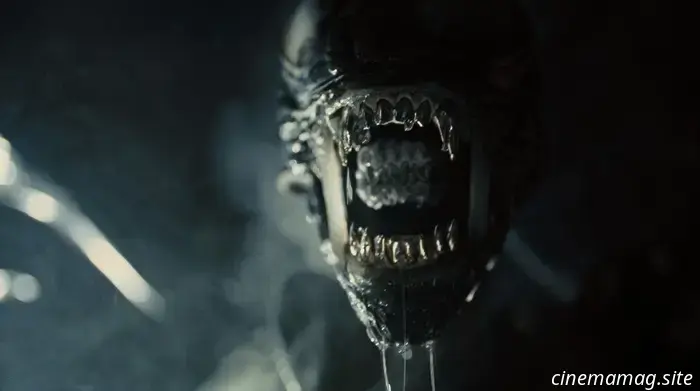-Movie-Review.jpg)
The Man in My Basement (2025) - Film Review
The Man in My Basement, 2025.
Directed by Nadia Latif.
Featuring Corey Hawkins, Willem Dafoe, Anna Diop, Brian Bovell, Mark Arnold, Jonathan Ajayi, Tamara Lawrance, Gershwyn Eustache Jnr, Pamela Nomvete, Kayla Meikle, Lizzie Lomas, Miah Hasselbaink, and Shellia Kennedy.
SYNOPSIS:
Charles Blakey, an African American man residing in Sag Harbor, finds himself in a tough spot, facing the potential loss of his ancestral home. Just as luck seems to be running out, a peculiar white businessman with a European accent approaches him with an offer to rent his basement for the summer.
The concept of a character voluntarily caging himself in a stranger's basement is undeniably odd, fitting for Willem Dafoe, who excels in eccentric roles. Fortunately, Nadia Latif's The Man in My Basement serves a purpose beyond mere weirdness.
This film is adapted from Walter Mosley’s novel of the same name, with the screenplay co-written by Mosley and Latif. It features deep philosophical discussions touching on race, Black historical artifacts, white guilt, and an allegorical reversal of roles in slavery, between two characters who share more common ground than they would like to acknowledge, resulting in a compelling and thought-provoking experience. However, the film's inclusion of supernatural horror elements falls flat and misses opportunities for character development that may be more effectively explored in the book. Walter Mosley’s complex heritage, identifying as both Jewish and African American, further enriches the material’s depth.
Corey Hawkins portrays the aimless and financially burdened Charles Blakey, who has no family, job, or means to maintain the eighth-generation home (built by a free family) that he inherited. In a humorous instance of unsettling behavior, Willem Dafoe’s Anniston Bennett shows up unannounced at Charles' door, casually inquiring about renting the basement for a couple of months. Charles, understandably disturbed, refuses and sends the strange man away. Taking advice from his poker-playing friends—a mix of sympathetic individuals and those frustrated by his inaction—he reaches out to African culture historian Narciss Gully (Anna Diop) to identify any valuable artifacts in his home’s history.
It turns out that there are indeed significant items, including some eerie masks brought from Africa. Nevertheless, Charles’ predicament remains unresolved; it would take three months to properly evaluate and sell the artifacts, and even longer before they could be displayed in a museum and generate revenue. It becomes apparent that Charles' casual willingness to part with these crucial historical items tied to his family history will later become a point of contention. Financial struggles aside, these possessions seem better suited to remain with him or be part of a museum collection rather than sold to the highest bidder.
In need of money, Charles ultimately decides to rent out the basement to Anniston, and coincidentally, the total payment for the three months is just enough to save his home. After a night of pleasant conversation and wine, Charles descends the next morning to discover Anniston locked in a cage, asserting the necessity of this arrangement and stating that Charles must undergo a spiritual journey by reading various civilization texts to confront a troubled past that includes criminal behavior. Charles’ immediate response is a concern that this situation could be perceived as sinister and dangerous if the police or others were to investigate the basement. This dynamic mirrors a role reversal of slavery, with Charles regularly providing meals for Anniston.
Despite his desire to back out of the arrangement, Charles finds himself unable to do so. Instead, he and Anniston engage in numerous conversations that examine their backgrounds, heritage, and present circumstances, gradually revealing their shared experiences. The tone darkens as Charles seeks to understand why he was chosen for this arrangement—beyond what seems to be an act of penance for white guilt—and uncovers Anniston's true identity and professional background. The revelations are often disturbing as Anniston's psychological journey unfolds.
As the psychological tension escalates, some of it begins to influence Charles, who at one point even adopts Anniston's identity while attempting to impress a woman, reflecting a desire to escape his own status as a wealthy white man with problems. This interplay presents a dynamic that could have been further explored. The film occasionally veers into the territory of supernatural horror, a shift that may be more effective on the page. Nevertheless, the themes tackled here provide abundant substance and provoke challenging questions about identity. With Corey Hawkins and Willem Dafoe’s consistently outstanding performances, there is much to unpack from a film that thrives on its dialogues and spirited exchanges.
Flickering Myth Rating – Film: ★ ★ ★ / Movie: ★ ★ ★
Robert Kojder is a member of the Chicago Film Critics Association, Critics Choice Association, and Online Film Critics Society. He is also the Flickering Myth Reviews Editor
-Movie-Review.jpg)
-Movie-Review.jpg)
-Movie-Review.jpg)
-Movie-Review.jpg)
-Movie-Review.jpg)
Other articles
 Star Wars: Jedi Knights #7 - Comic Book Teaser
Marvel Comics is set to release Star Wars: Jedi Knights #7 on Wednesday, and we have the official preview of the issue for you below; take a look… QUI-GON JINN IS DEAD! Or he will be… unless JEDI KNIGHTS MACE WINDU and AAYLA SECURA can locate the antidote to the poison that is threatening his life. The antidote can […]
Star Wars: Jedi Knights #7 - Comic Book Teaser
Marvel Comics is set to release Star Wars: Jedi Knights #7 on Wednesday, and we have the official preview of the issue for you below; take a look… QUI-GON JINN IS DEAD! Or he will be… unless JEDI KNIGHTS MACE WINDU and AAYLA SECURA can locate the antidote to the poison that is threatening his life. The antidote can […]
 TIFF Review: Palestine 36 Provides a Wide Range of Insights and Historical Context
It seems that Amir (Dhafer L'Abidine) genuinely seeks the insights of the village when he requests his chauffeur Yusuf (Karim Daoud Anaya) to share the Palestinian experience beyond the city with a group of landowners gathered at his table. However, he hardly gets the introduction finished before one of the guests points out his position: it is they who
TIFF Review: Palestine 36 Provides a Wide Range of Insights and Historical Context
It seems that Amir (Dhafer L'Abidine) genuinely seeks the insights of the village when he requests his chauffeur Yusuf (Karim Daoud Anaya) to share the Palestinian experience beyond the city with a group of landowners gathered at his table. However, he hardly gets the introduction finished before one of the guests points out his position: it is they who
 TIFF Review: With Hasan in Gaza Faces Israeli Aggression with Poise and Remembrance
The recent documentary With Hasan in Gaza offers a moving and reflective depiction of a city currently battling for survival. It serves as both a travelogue and a time capsule. In 2001, filmmaker Kamal Aljafari traveled to Palestine with the intention of locating Adder Rahim, a friend he had made during his seven months in the juvenile section of Israel’s.
TIFF Review: With Hasan in Gaza Faces Israeli Aggression with Poise and Remembrance
The recent documentary With Hasan in Gaza offers a moving and reflective depiction of a city currently battling for survival. It serves as both a travelogue and a time capsule. In 2001, filmmaker Kamal Aljafari traveled to Palestine with the intention of locating Adder Rahim, a friend he had made during his seven months in the juvenile section of Israel’s.
 Batman: Dark Patterns #10 - Comic Book Sneak Peek
DC Comics is set to release Batman: Dark Patterns #10 on Wednesday, and we have the official preview for you below; take a look… An enigmatic arsonist has been discreetly influencing the development of Gotham and Batman from the sidelines… now their sinister plan approaches its culmination. Will this elaborate scheme succeed, or will the […]
Batman: Dark Patterns #10 - Comic Book Sneak Peek
DC Comics is set to release Batman: Dark Patterns #10 on Wednesday, and we have the official preview for you below; take a look… An enigmatic arsonist has been discreetly influencing the development of Gotham and Batman from the sidelines… now their sinister plan approaches its culmination. Will this elaborate scheme succeed, or will the […]
 Inside IDW's Star Trek: Voyager - Homecoming with writers Tilly and Susan Bridges - Exclusive Interview
Villordsutch conducts an interview with Tilly and Susan Bridges, the creators of Star Trek: Voyager – Homecoming… Star Trek: Voyager – Homecoming is more than just a comeback—it's a daring progression that captures all the essential emotional and storytelling moments. Crafted by dedicated Trek fans Tilly and Susan Bridges, the comic offers an exciting and touching reunion for Janeway and her […]
Inside IDW's Star Trek: Voyager - Homecoming with writers Tilly and Susan Bridges - Exclusive Interview
Villordsutch conducts an interview with Tilly and Susan Bridges, the creators of Star Trek: Voyager – Homecoming… Star Trek: Voyager – Homecoming is more than just a comeback—it's a daring progression that captures all the essential emotional and storytelling moments. Crafted by dedicated Trek fans Tilly and Susan Bridges, the comic offers an exciting and touching reunion for Janeway and her […]
 Fede Álvarez will hand over directing duties to another filmmaker for the sequel to Alien: Romulus.
Receiving widespread praise and grossing $351 million globally, Fede Álvarez adeptly revived the Alien franchise with Alien: Romulus. However, with just a few months left before production was scheduled to begin on the sequel, the director has announced his decision to “pass the torch” to another filmmaker. In an interview with TooFab, Alvarez […]
Fede Álvarez will hand over directing duties to another filmmaker for the sequel to Alien: Romulus.
Receiving widespread praise and grossing $351 million globally, Fede Álvarez adeptly revived the Alien franchise with Alien: Romulus. However, with just a few months left before production was scheduled to begin on the sequel, the director has announced his decision to “pass the torch” to another filmmaker. In an interview with TooFab, Alvarez […]
The Man in My Basement (2025) - Film Review
The Man in My Basement, 2025. Directed by Nadia Latif. Featuring Corey Hawkins, Willem Dafoe, Anna Diop, Brian Bovell, Mark Arnold, Jonathan Ajayi, Tamara Lawrance, Gershwyn Eustache Jnr, Pamela Nomvete, Kayla Meikle, Lizzie Lomas, Miah Hasselbaink, and Shellia Kennedy. SYNOPSIS: Charles Blakey, an African American man residing in Sag Harbor, finds himself in a difficult situation, […]
